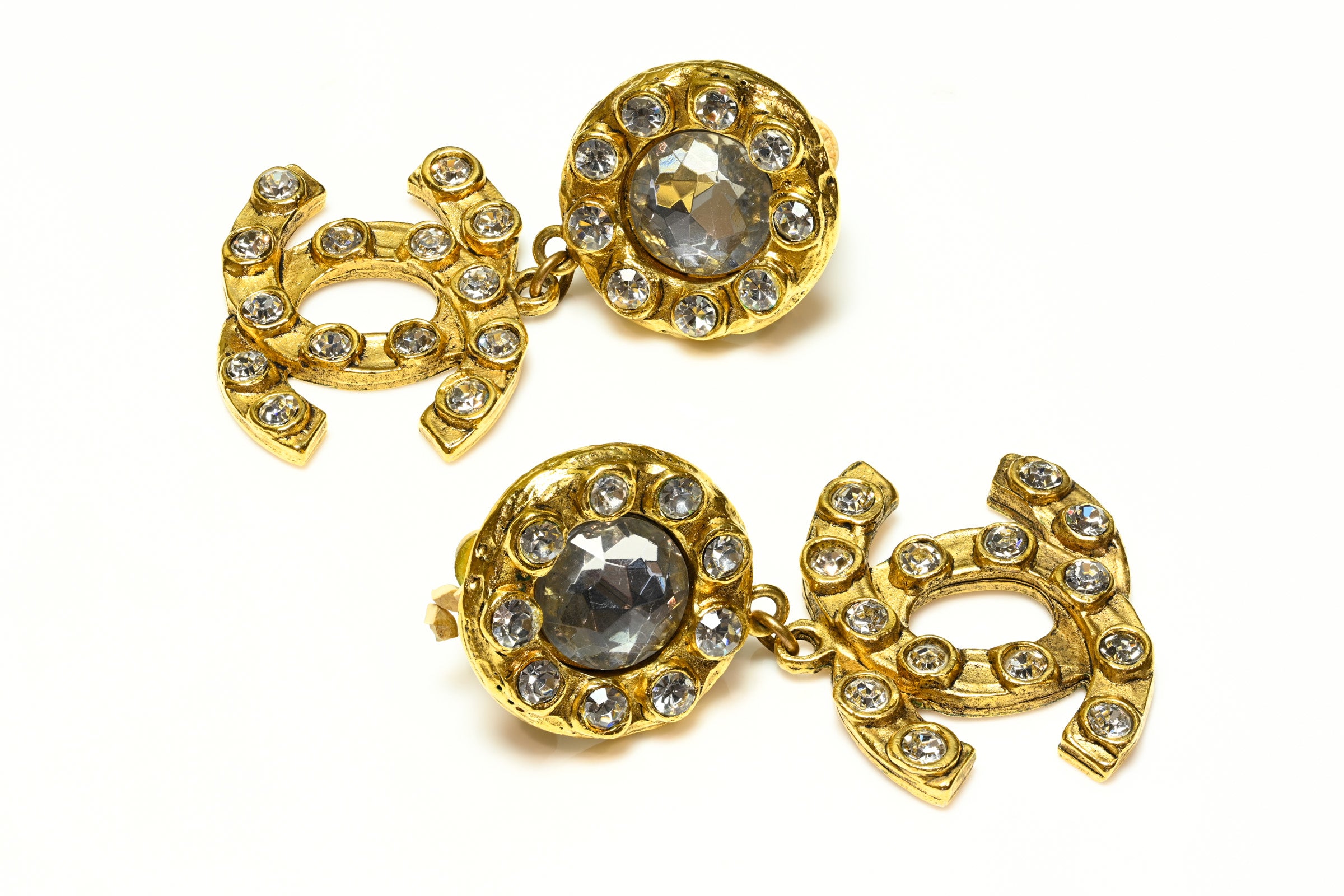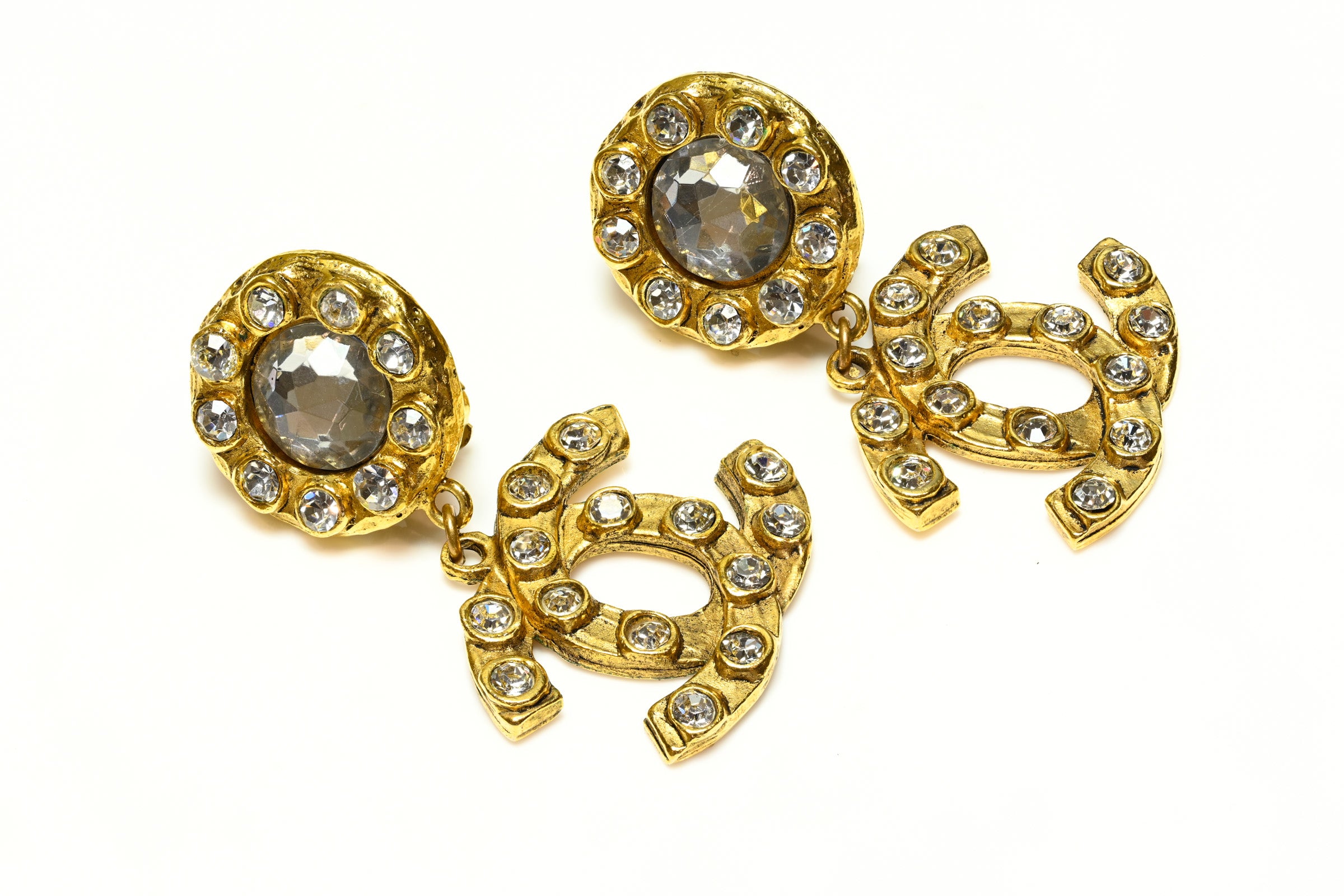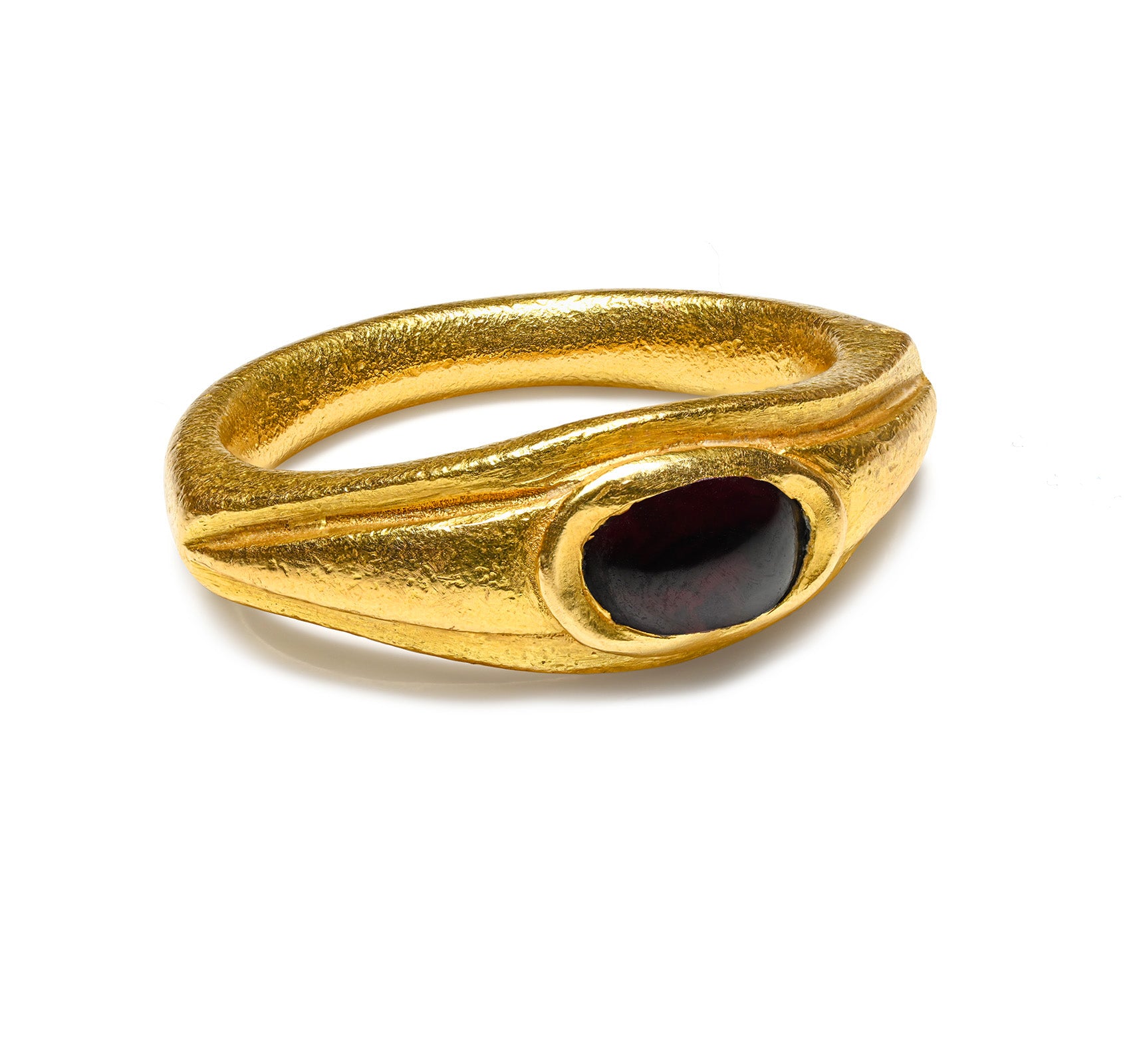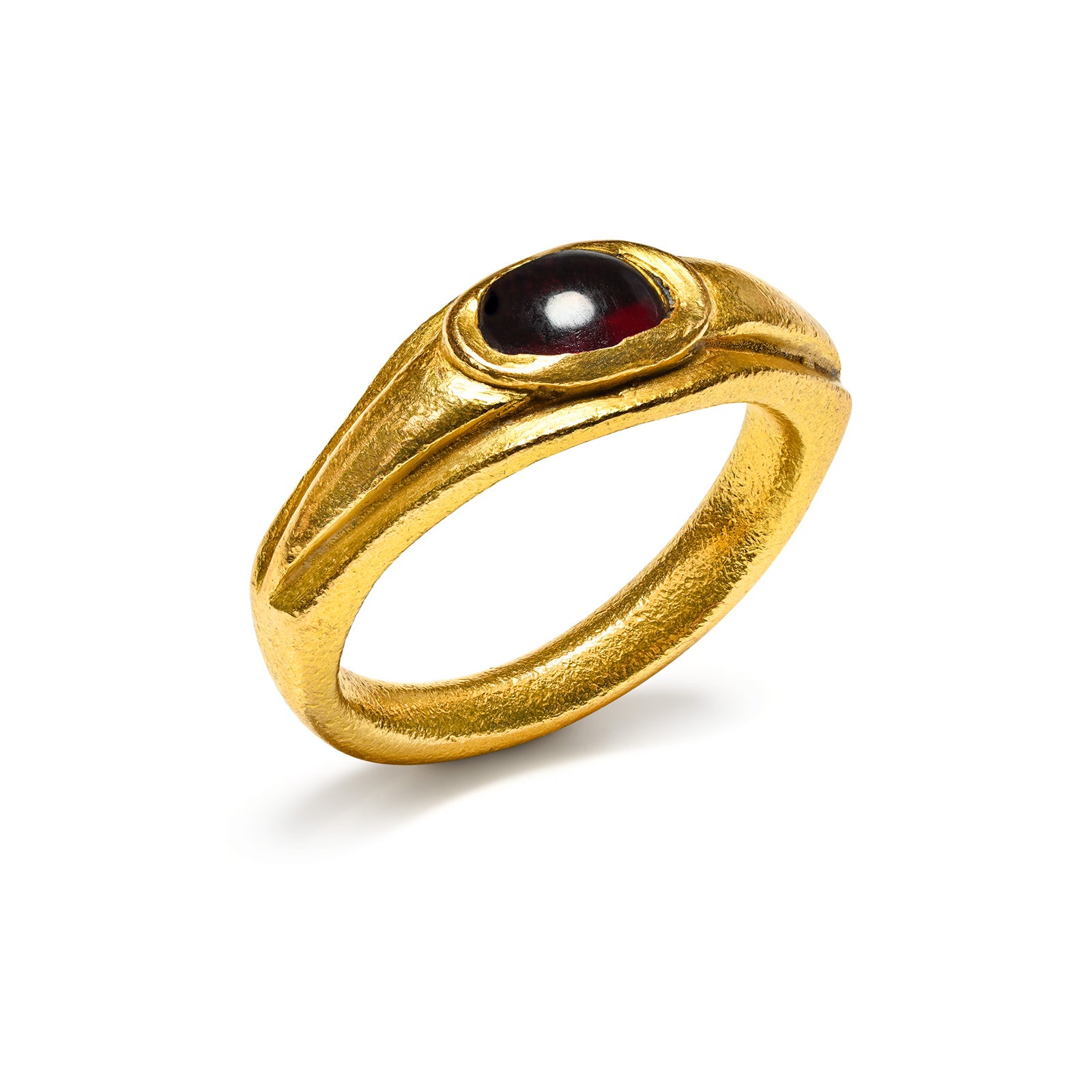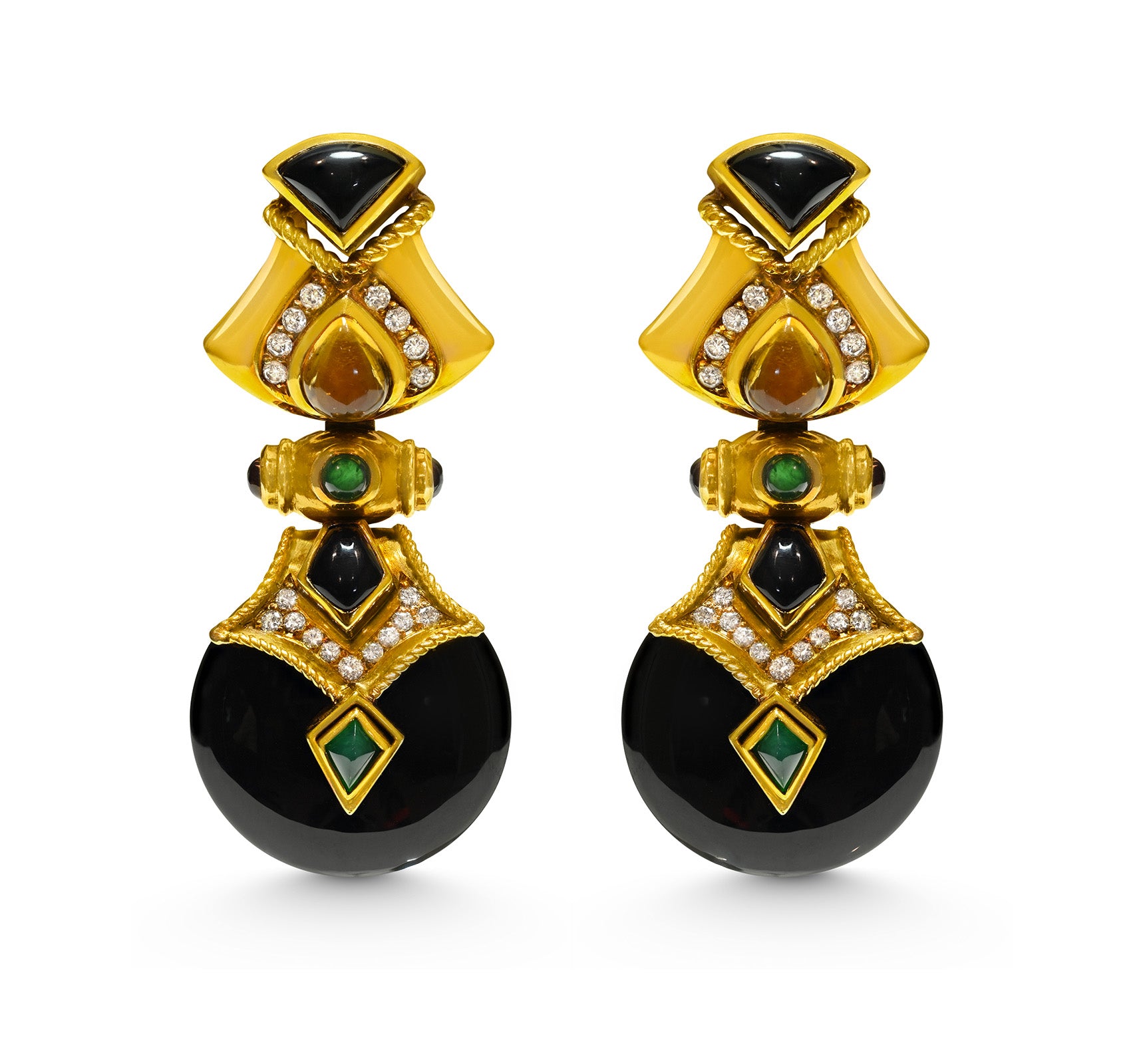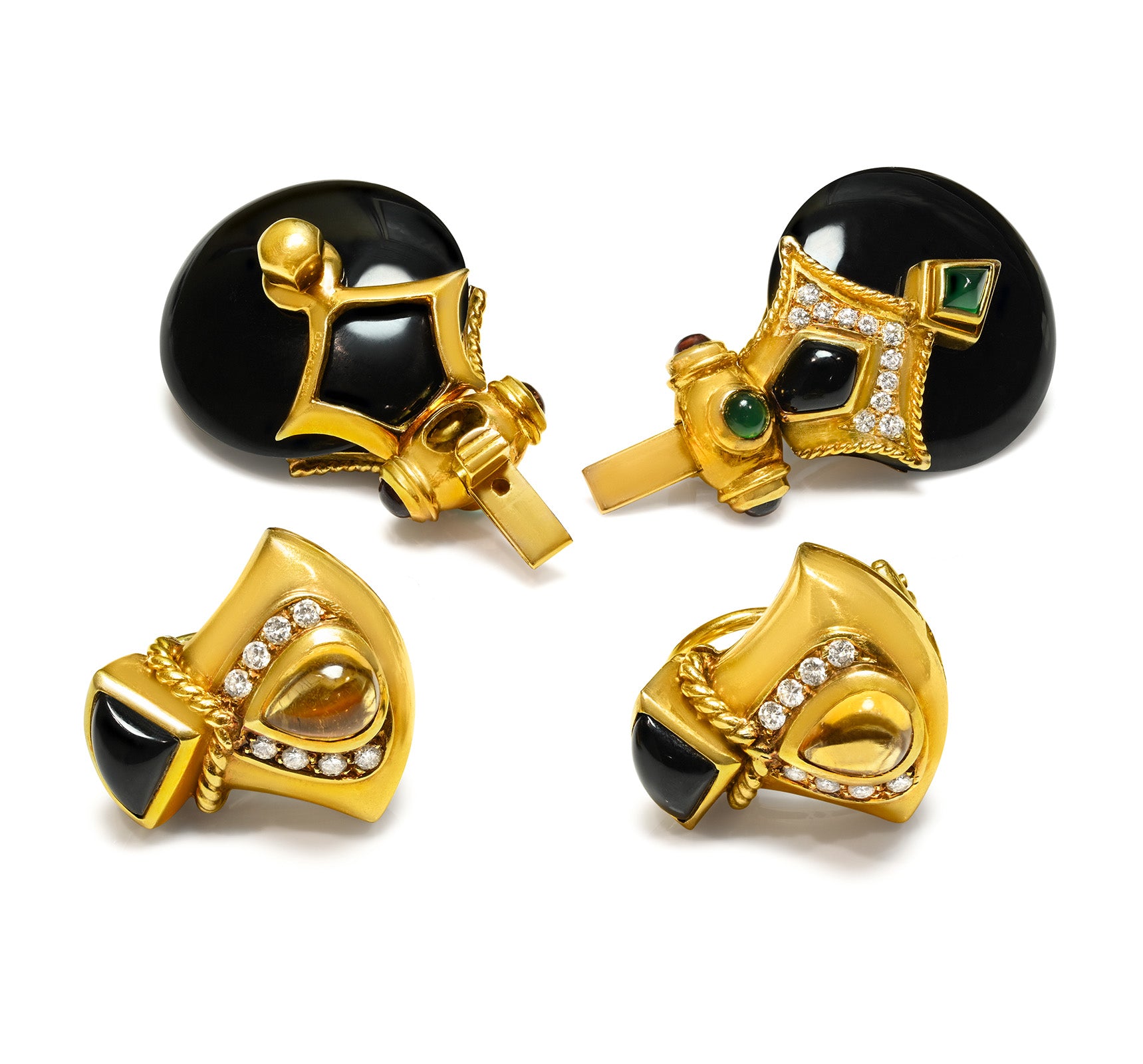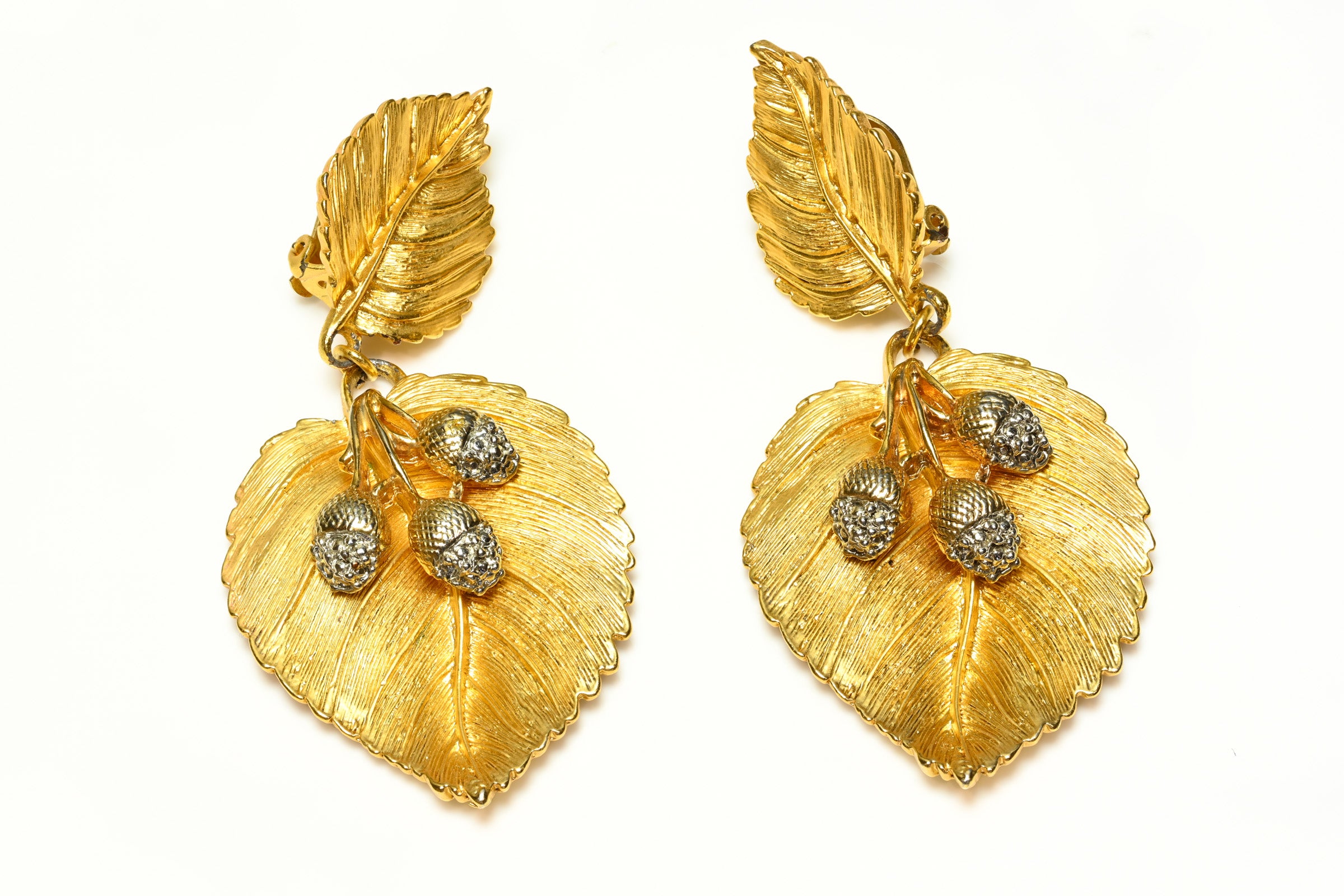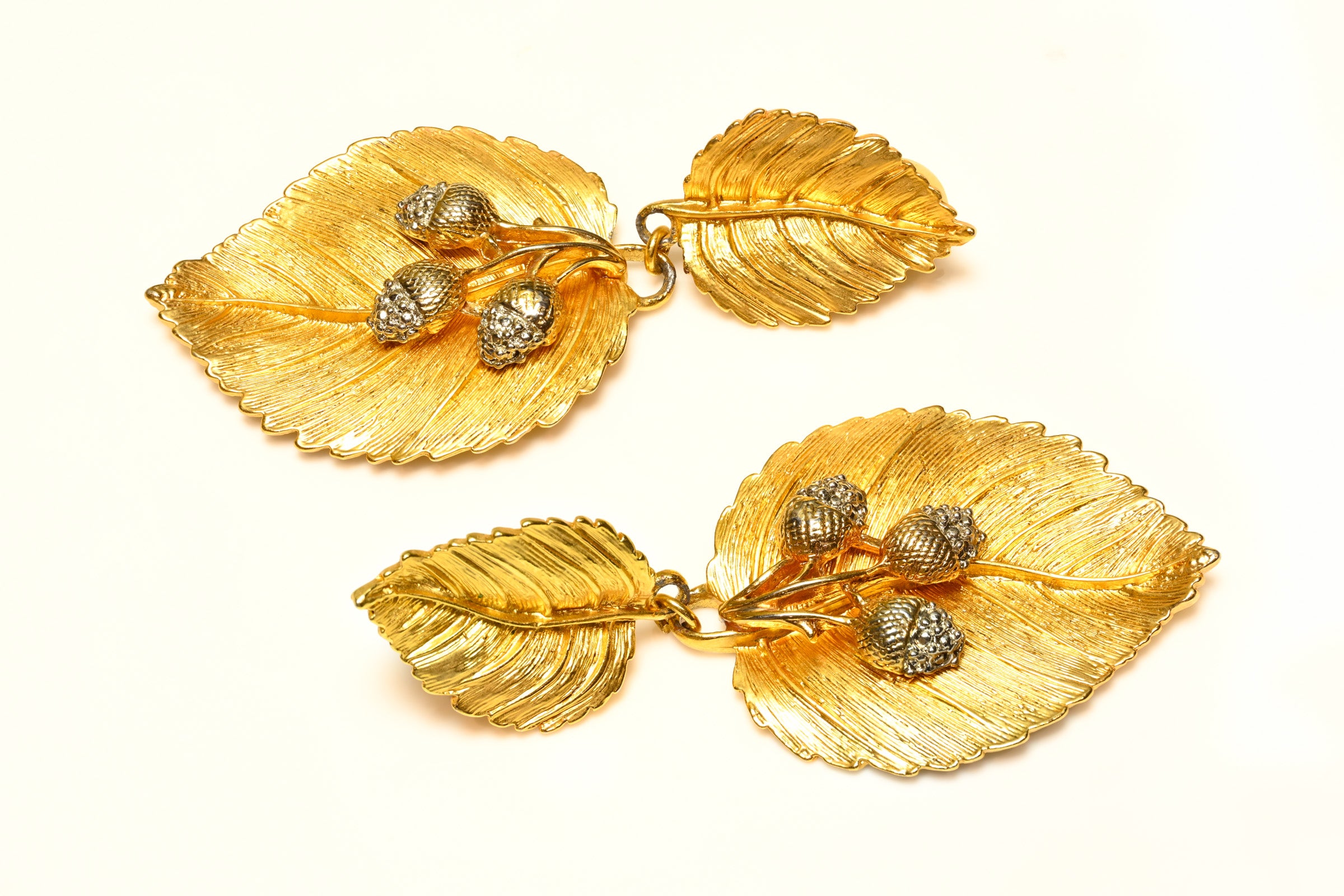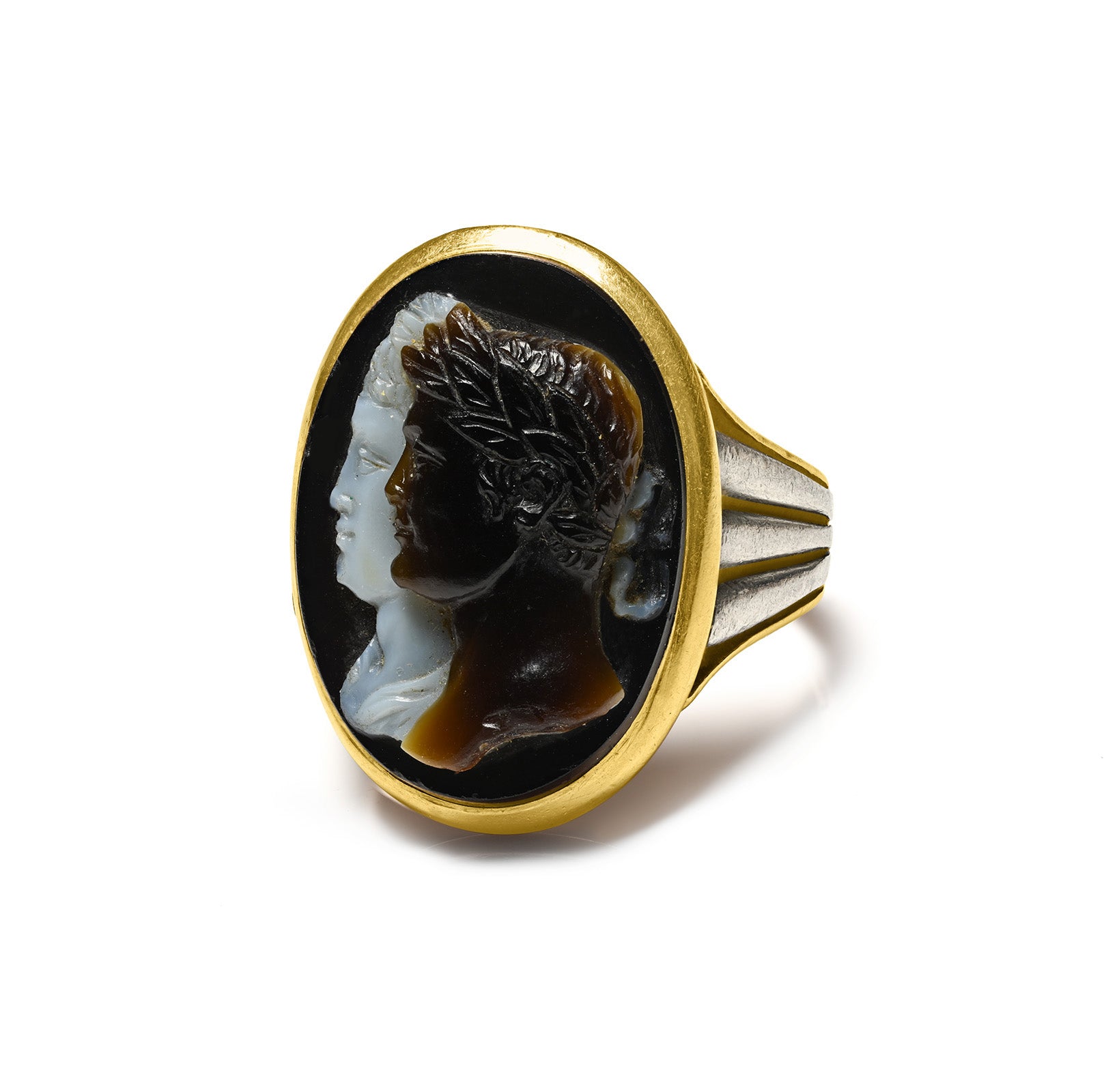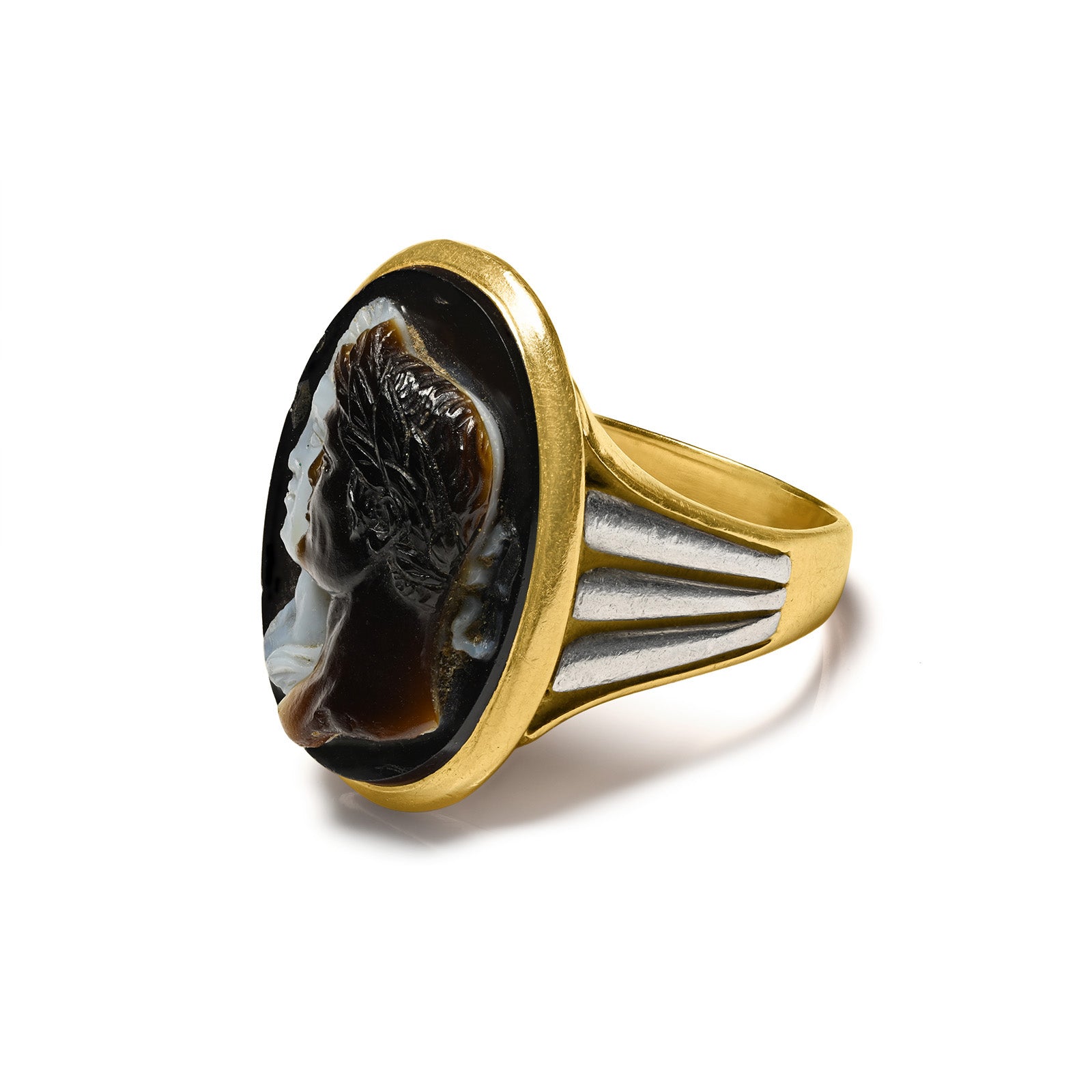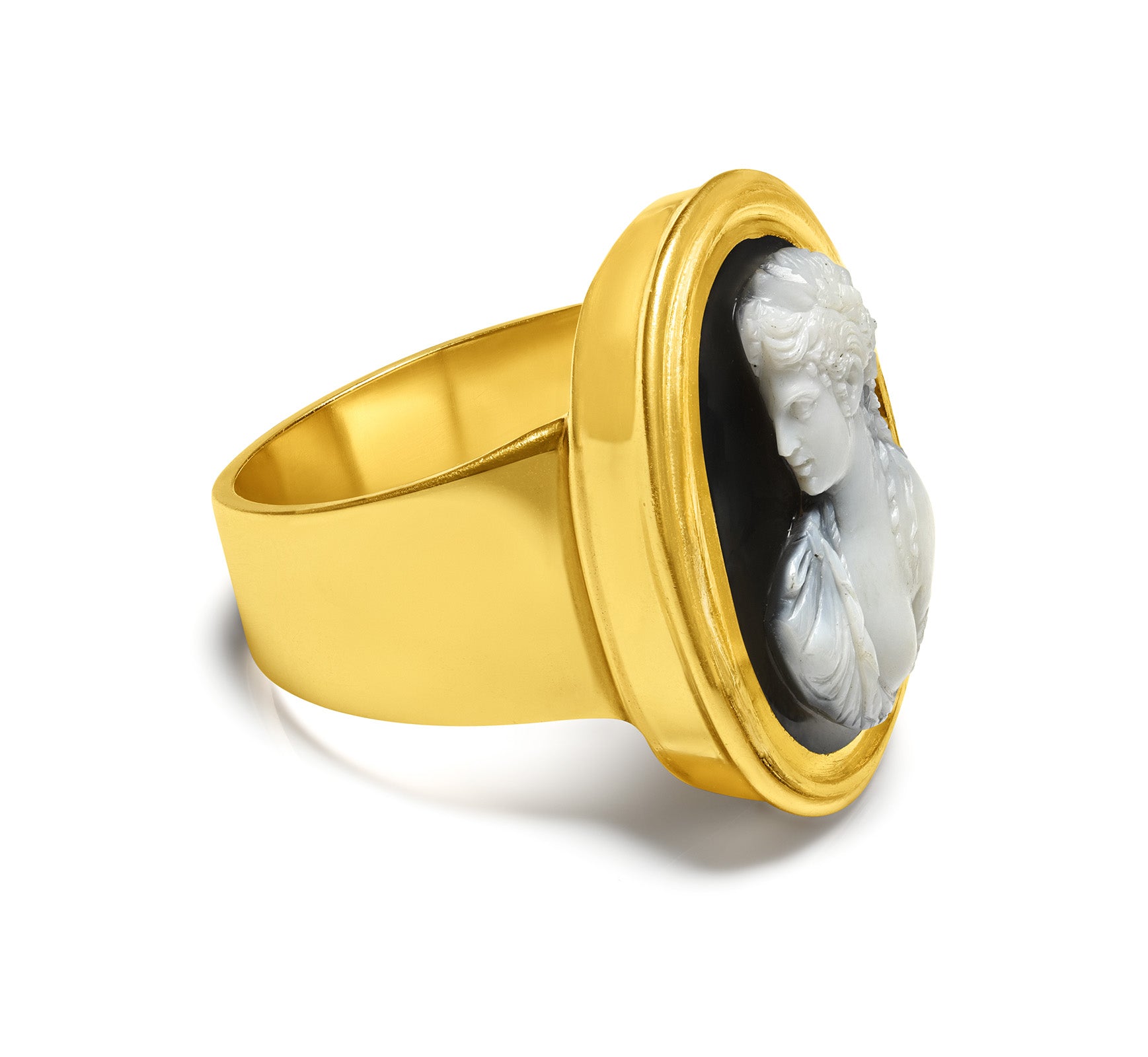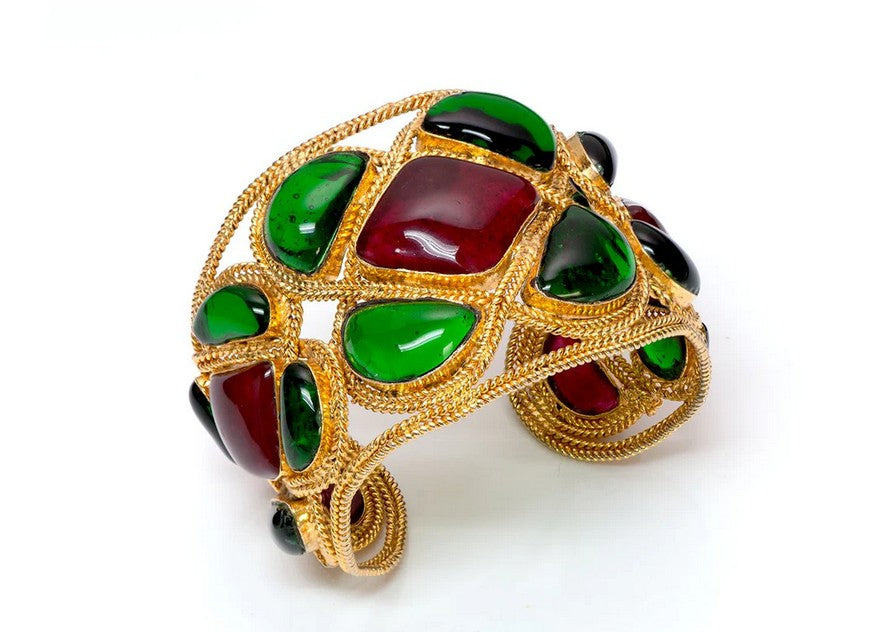
Costume Jewelry: A Historical and Artistic Exploration
Costume jewelry, often overshadowed by its more opulent counterparts, holds a rich and compelling history that mirrors cultural shifts, artistic experimentation, and the evolution of fashion itself.
Far from being mere imitations, these adornments have emerged as symbols of creativity and accessible luxury. Once dismissed as "junk jewelry" due to their use of non-precious materials like glass, rhinestones, and base metals, they are now recognized as artistic expressions in their own right—collected, studied, and admired around the world.
From their humble beginnings to their rise in popularity during times of economic restraint, costume jewelry pieces reflect not only the tastes of their eras but also the ingenuity of the designers behind them.
Many of these artisans approached their work with the same level of dedication and vision as their counterparts in high jewelry, transforming simple materials into wearable art.

Vintage Chanel Paris Maison Gripoix Orange Red Glass Collection 28

Chanel Paris 1990's Maison Gripoix Green Leaf Glass Camellia Pearl Necklace
The Subjectivity of Artistic Masterpieces
Art, in all its forms, thrives on subjectivity. What resonates as a masterpiece for one person might seem unremarkable to another. This principle applies across creative disciplines—literature, music, painting, and of course, jewelry.
A reader may cherish the unique prose of Shakespeare or the poetic complexity of Milton, just as a music lover might hold Puccini or The Beatles in the highest regard. Similarly, in the world of fine art, names like Renoir, Dufy, and Warhol stir passion and debate.
Jewelry, as author Joanne Dubbs Ball emphasizes in "Masterpieces of Costume Jewelry", follows the same path. While some collectors pursue flawless diamonds or rare sapphires, others are drawn to the shimmering beauty of rhinestones, the charm of enamel, or the bold expressiveness of colored glass. A "masterpiece” in jewelry design is not defined by its carat weight, but by the vision, craftsmanship, and emotional resonance it carries.
Costume jewelry proves that artistry can flourish beyond precious metals and stones. Intricate stone settings, inventive silhouettes, and whimsical or nature-inspired motifs demonstrate the immense skill involved in crafting these pieces. To dismiss them on the basis of material alone is to overlook a genre that has long celebrated the intersection of design, history, and individuality.

Vintage 1940's Marcel Boucher Yellow Enamel Green Crystal Flower Brooch

Christian Dior Couture 1965 Max Muller Blue Crystal Necklace Earrings Set
Historical Evolution of Costume Jewelry
Although the term "costume jewelry" only came into popular use in the 20th century, the idea of non-precious, decorative jewelry has ancient roots.
As early as ancient Egypt and Rome, people adorned themselves with glass, enamel, and other modest materials to express status or personal style. However, it was not until the modern era—shaped by industrial, social, and artistic revolutions—that costume jewelry was recognized as its own category within the fashion world.
The Industrial Revolution of the 19th century played a pivotal role in democratizing jewelry. Breakthroughs in mass production allowed jewelers to manufacture pieces at lower costs, using materials like rhinestones and paste—glass imitations of gemstones. This accessibility blurred the rigid boundary between "high" and "low" jewelry, making stylish adornment available to a much broader audience.
By the early 1900s, advancements in metalwork and imitation stone production enabled the creation of intricate, elegant designs that mirrored high fashion. Women from various social backgrounds could now complement their wardrobes with striking, yet affordable, accessories. These pieces weren’t merely imitations—they represented a new form of artistic expression, influenced by the same aesthetic movements that were shaping fine jewelry.
Artistic styles like Art Nouveau and Art Deco had a profound impact. Art Nouveau favored flowing lines and botanical motifs, while Art Deco embraced symmetry, bold contrasts, and geometric precision. These design languages filtered into costume jewelry as well, offering wearable interpretations of contemporary art movements. Jewelry from the 1920s often combined meticulous craftsmanship with the exuberant spirit of the era, showcasing mosaic-like patterns, stylized natural elements, and exotic inspirations.
The first known mention of the term "costume jewelry" appeared in The New Yorker in 1933. Previously, similar adornments were referred to as "dress ornaments" or "craftsman’s jewelry" in publications like Vogue. The post–World War I decades saw a dramatic expansion in the use of alternative materials such as Bakelite, plastics, and base metals. These mediums allowed designers to experiment with vibrant colors and sculptural forms, freeing them from the constraints of tradition.
Designers like Coco Chanel and Elsa Schiaparelli were instrumental in elevating costume jewelry to high fashion. Chanel’s blend of faux pearls and real gems introduced a layered, accessible glamour that became iconic. Schiaparelli, on the other hand, was known for her playful and surrealist approach—her designs embraced fantasy and irreverence in a way that set her apart from the more restrained elegance of Art Deco.

Chanel Byzantine Brooch

Vintage Chanel Paris by Goossens Carnelian Beads Camellia Flower Sautoir Necklace

Elsa Schiaparelli Roger Jean-Pierre Couture 1930’s Crystal Necklace Earrings Set

Leni Kuborn-Grothe Kitzbuhel Earrings
The popularity of costume jewelry soared in tandem with the rise of Hollywood. Movie stars like Marilyn Monroe and Audrey Hepburn wore bold, theatrical pieces on screen and in public, sparking widespread trends. For many women, these glamorous accessories offered an affordable connection to celebrity style.
Trifari, led by Alfred Philippe, became synonymous with quality and refinement in the mid-century costume jewelry market. Philippe introduced advanced stone-setting techniques that gave Trifari pieces the brilliance and polish of fine jewelry.

Trifari 1930’s Alfred Philippe KTF Tutti Frutti Red Green Blue Crystal Brooch

Vintage 1950's Trifari Alfred Philippe Aurora Borealis Necklace Bracelet Set

Trifari KTF 1930’s Alfred Philippe Crystal Dress Clip Brooch
Meanwhile, designers like Joseff of Hollywood brought a cinematic flair to costume jewelry. Joseff’s historically inspired creations appeared in countless films of the 1930s and ’40s, influencing both on-screen aesthetics and real-world trends. His elaborate designs—often with antique finishes and exotic motifs—became collector’s items in their own right.

Chanel Paris 1990’s Maison Gripoix Glass Crystal Cuff Bracelet

Christian Dior Paris Couture 1964 Henkel & Grosse Blue Crystal Collar Necklace
The Craft and Artistry of Costume Jewelry
While often designed for accessibility and mass appeal, costume jewelry involves a surprising degree of craftsmanship and technical complexity. Most pieces are created from base metal alloys such as copper, pewter, or white metal, which are then enhanced through a process of electroplating.
This common technique uses electrolysis to apply successive layers—typically starting with copper, followed by nickel or chromium, and finally finished with a thin coat of precious metal like gold or rhodium. For a more subdued effect, some pieces receive a matte or satin finish, achieved by brushing the surface with fine matting powder.
Higher-end costume jewelry may be crafted from sterling silver, either left untreated or gold-plated to create vermeil, combining durability with an upscale aesthetic. These subtle differences in material and finish often distinguish mass-produced accessories from collectible or designer-level creations.

Chanel 1990’s Maison Gripoix Green Yellow CC Heart Cross Glass Beads Necklace

Vintage Coco CHANEL Paris 1925/38 Purple Crystal Mademoiselle Face Brooch
The Art of Casting
The foundation of many costume jewelry pieces lies in the ancient practice of casting. At its core is the "lost wax" method (cire perdue), a technique that dates back thousands of years.
A wax model is encased in a mold and melted away to leave a cavity, which is then filled with molten metal. The adoption of centrifugal force—borrowed from the dental field in the 1920s—transformed this age-old process. By rapidly spinning the mold, molten metal could be forced into every intricate detail, enabling faster production without compromising design integrity.
Investment casting marked another leap forward. This more refined method uses a combination of plastic, silica, graphite, and boric acid to create molds that are both heat-resistant and porous—allowing gases to escape during casting.
Introduced widely in the 1930s, this innovation helped manufacturers produce detailed jewelry components with high precision and lower costs, ushering in a new era for mass-market costume jewelry.
Fastenings, Findings, and Artisanal Expertise
No detail is too small in the world of costume jewelry. Functional components like clasps, hinges, and chains require their own specialized knowledge. Fastenings—ranging from snap locks and swivels to bolt rings and toggle bars—are not just utilitarian; they are often designed with as much care as the focal elements of a piece.
Findings, which include ear wires, pin backs, jump rings, and safety chains, are typically mass-produced in various metals, but in the case of high-end designs, they may be custom-made by skilled artisans.
Even the simplest wire used in a necklace or brooch might be twisted, braided, or coiled into decorative forms, echoing the delicacy of plaited hair or filigree work. These subtle artistic gestures contribute to the overall beauty and originality of a finished piece.
While much of the production moved toward industrialization, craftsmanship continued to thrive in dedicated ateliers. In postwar Paris, for instance, workshops near Place de la République remained essential to the creation of couture accessories.
Companies like Winter, a renowned supplier to French fashion houses during the 1950s, employed dozens of artisans—each specializing in metalwork, woodcraft, or stone setting. These collaborations ensured that every collection reflected the designer’s seasonal vision, translated into wearable art.

Christian Dior Paris Couture 1959 Pink Black Crystal Collar Necklace

Schreiner NY 1950’s Green Pink Crystal Brooch Earrings Set
The Art and Craft of Jewelry Design
Designing costume jewelry is a nuanced process that goes far beyond sketching pretty adornments. It demands a strong understanding of the entire production chain—from material sourcing to technical feasibility—while staying true to an artistic vision. A successful designer must balance creativity with practicality, considering cost, labor, and production limitations.
The journey begins with the jewelry rendering: a detailed and often elaborate illustration that captures every stone, setting, and embellishment. Once approved, this rendering is transformed into a "working drawing," complete with precise dimensions and technical annotations. These serve as a blueprint for the model maker, who uses pewter stock to cut, solder, and assemble each component with a coping saw and torch.
Fine details such as textures or surface treatments are added using engraving tools or electric burrs. The piece is then polished—often by hand using steel wool—to achieve its final finish.
Model makers often specialize in advanced techniques like pavé, and many undergo years of training to perfect their craft. Every structural element, from the thickness of metal to the placement of pins, clasps, and trademark stamps, is carefully scrutinized to ensure both durability and elegance.
The Evolution of Costume Jewelry
The 20th century marked the golden era of costume jewelry—a time when artistry met accessibility. During this period, major American manufacturers, many of them based in New York and Rhode Island, developed signature lines that bore engraved marks or plaques, lending prestige to even the most affordable pieces.
Among these names was Accessocraft, founded in the 1930s by Edgar Rodelheimer and Theodore Steinman. Their creations blended functionality and flair, producing not just necklaces and bracelets, but opera glasses, magnifying pendants, and sculptural belt buckles.
Arthur Pepper’s ModeArt brand—marked simply "Art"—gained popularity for its distinctive, whimsical designs. McClelland Barclay, a talented artist and sculptor, brought the elegance of Art Deco into the world of rhinestone brooches and accessories, crafting pieces that remain coveted collectibles.
In Europe, Italian brand Bijoux Cascio—founded by Gaetano Cascio—made a splash at Italy’s first Alta Moda show in 1951. Known for its exquisite metalwork and Old World attention to detail, the company’s legacy continues to inspire designers with its refined silhouettes and timeless craftsmanship.
Costume Jewelry in Modern Fashion
Today, costume jewelry continues to evolve while paying homage to its glamorous past. Contemporary designers frequently borrow from Art Deco symmetry, Art Nouveau flourishes, and mid-century drama to create modern interpretations of vintage classics.
Leading fashion houses such as Dior, Gucci, and Versace regularly incorporate bold costume pieces in their runway collections—proving that elegance doesn’t require diamonds.
Younger consumers, driven by a love of vintage aesthetics and affordability, have embraced costume jewelry anew. Statement earrings, oversized rings, and chunky chain necklaces are making a vibrant comeback, fueled by fashion influencers and social media platforms. Fast fashion brands have also embraced this trend, producing playful, nostalgic accessories that echo the golden decades of costume design.
The enduring appeal of costume jewelry lies in its versatility. Whether layered over a simple T-shirt or paired with evening wear, it offers a dash of personality and glamour. More than ever, it stands as a symbol of creativity and self-expression—proving that great design transcends materials and that beauty can be both bold and accessible.

Schreiner NY Haute Couture 1950's Pink Yellow Green Crystal Drop Collar Necklace

Chanel Maison Gripoix Byzantine Belt

Chanel 1990’s Wide Gold Plated Blue Crystal Pearl Cuff Bracelet
The Collector's Perspective
For collectors, vintage costume jewelry offers more than visual appeal—it provides a tangible link to the past. The excitement of uncovering a forgotten brooch at an estate sale or recognizing a maker’s mark on a pair of clip-on earrings evokes both personal satisfaction and historical curiosity.
What draws collectors most is the intersection of craftsmanship and cultural context. Signed pieces from iconic designers like Chanel, Trifari, and Schiaparelli often fetch impressive prices at auction houses and are cherished as wearable works of art. Yet even unsigned creations can possess exceptional beauty and artistic merit, especially when they reflect a specific design era or showcase unusual techniques.
The stylistic range of costume jewelry is another key attraction. From the geometric precision of Art Deco to the bold flair of Retro designs, from the refined elegance of Mid-Century Modern to the eclectic charm of Bohemian pieces—each jewel captures the spirit of its time.
To the discerning eye, every clasp, motif, and material tells a story, offering insight into changing tastes, technological advances, and the social shifts that shaped fashion history.

Vintage Christian Dior Galliano Tonkidior 2006 Turquoise Beads Enamel Butterfly Necklace


